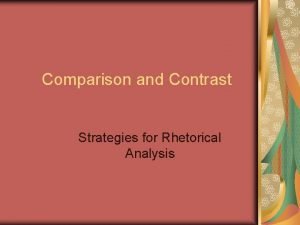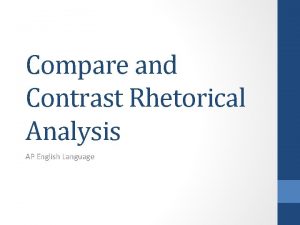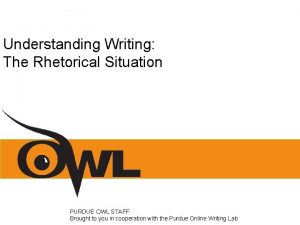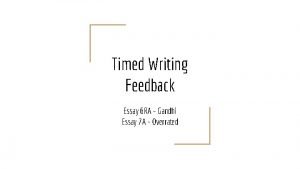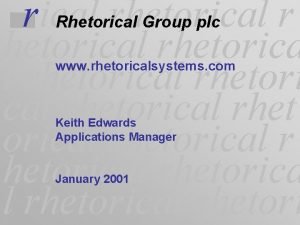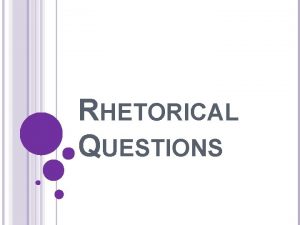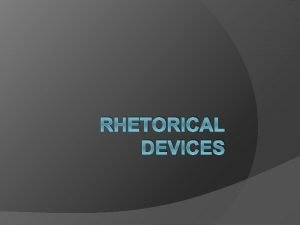RHETORICAL ANALYSIS What and Why Rhetorical analysis is








- Slides: 8

RHETORICAL ANALYSIS

What and Why? Rhetorical analysis is taking apart the pieces of a text to see how it works. It is useful because it gives you language/words to talk about how writing works. It can help you think critically and metacognitively about your own writing. It can be universally applied across similar modes/media We’ll talk later about some differences as outlined by Bogost.

Steps Describe the item Who is the intended audience? What is the primary purpose of the piece? Who is the writer/producer of the piece? How are rhetorical features used to persuade the audience and achieve its purpose? Logos? Ethos? Pathos? Kairos?

Let’s begin with Audience In a given rhetorical situation, there are three audiences: intended, actual, and invoked. Ideally, they overlap, but once a work leaves a writer/producer, it can be read and interpreted in a number of different ways Ian Bogost refers to this when he mentions the poststructuralist decoupling of authorship from readership (20)—in other words, despite what the author of a piece intendeds, readers can interpret and process a piece any way they see fit.

Intended, Actual, Invoked Intended audience – this is who the primary author had in mind would be reading the piece. Certain assumptions about values and ideology are made. Actual audience – this is who is actually reading a piece. It’s a reader of the Wall Street Journal who is middle-upper to upper class, lives in New York, and is a fiscal conservative. It’s the farmer in Iowa who is reading a copy of the Wall Street Journal while waiting for his breakfast order at a local café. Invoked audience – this is an audience specifically named (e. g. “you”). It attempts to connect with a specific audience at the risk of alienating actual and a more inclusive intended audience. It’s the writer who begins a Wall Street Journal article, “You may be interested in the new crop of hybrid automobiles coming out of Detroit. ” The farmer doesn’t really care unless it is a hybrid tractor, and the New Yorker as intended audience probably doesn’t drive, and only cares insomuch as it might be an investment opportunity.

Rhetorical triangle

Figure 3. Mercenaries 2 TV commercial. Youtube (2008). http: //www. youtube. com/watch? v=FB 2 rv. CJMk 2 k

Works Cited Bogost, Ian. Persuasive Games: The Expressive Power of Videogames. Boston: MIT, 2008. Print. Marcos Rivero. Mercenaries 2 commercial oh no you didn't. 27 August 2008. You. Tube. 9 January 2013 https: //www. youtube. com/watch? v=FB 2 rv. CJMk 2 k




